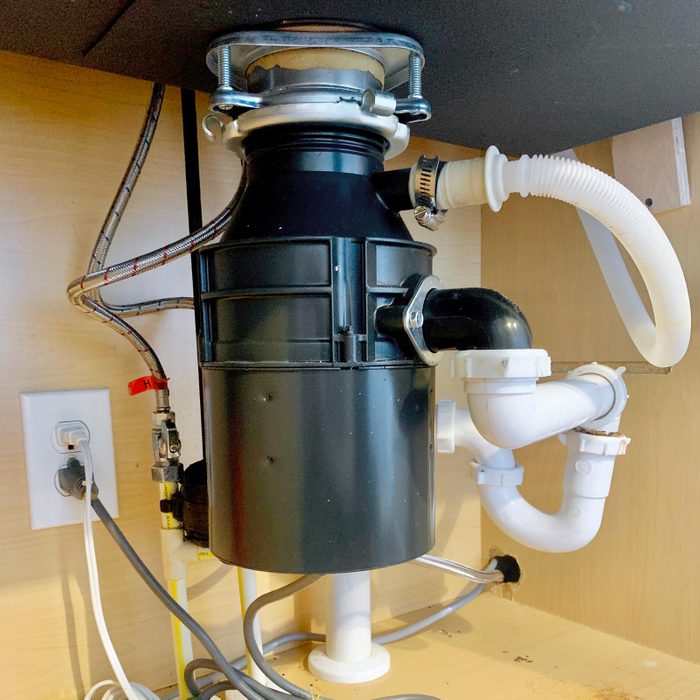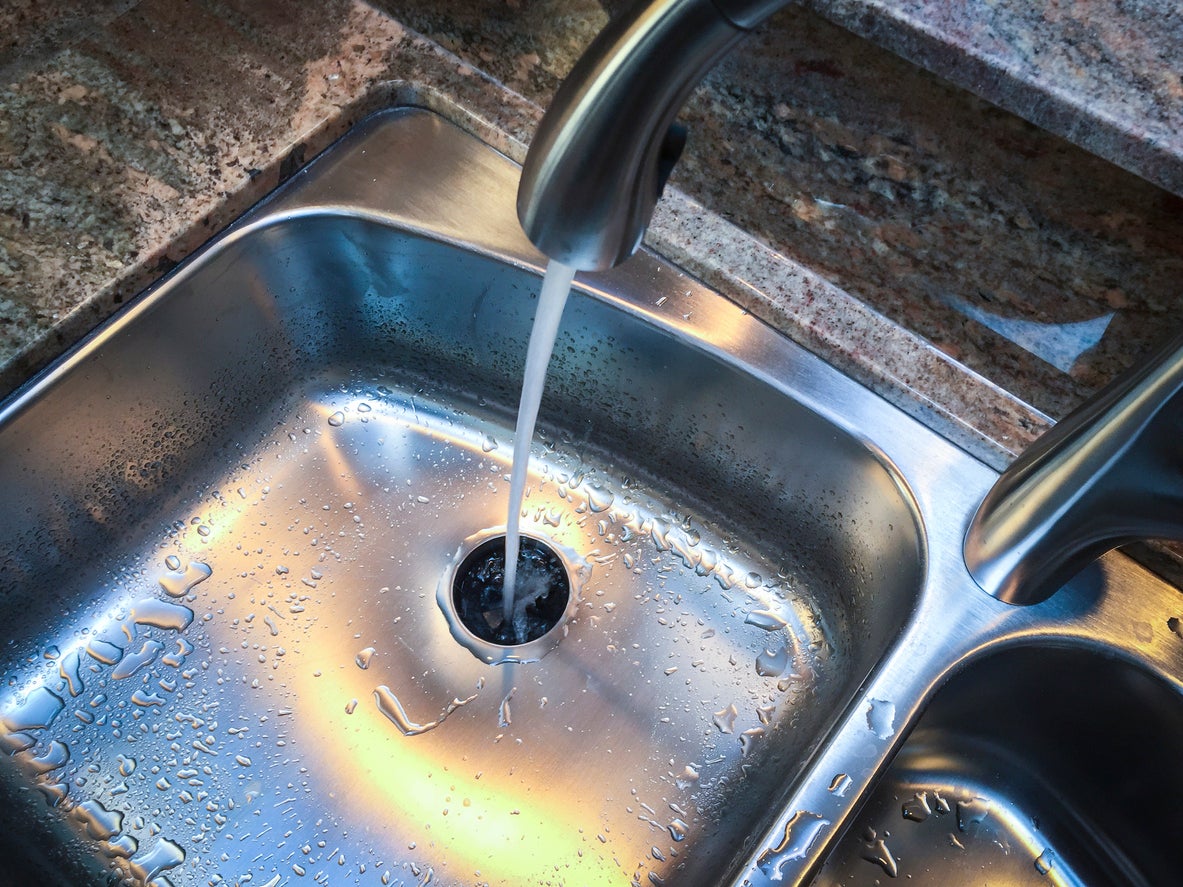Leading Tips for Fixing a Leaking Waste Disposal Unit
Leading Tips for Fixing a Leaking Waste Disposal Unit
Blog Article
Nearly everybody has got his or her own opinion about The Handy Guide To Fixing Your Garbage Disposal Leaking.

Waste disposal unit are important kitchen area devices that aid in dealing with food waste efficiently. Nonetheless, a dripping garbage disposal can be an irritating and unpleasant issue to manage. Luckily, many leaks can be repaired conveniently with a couple of straightforward steps. In this short article, we will review just how to deal with a dripping waste disposal unit effectively.
Intro
Garbage disposals are installed under kitchen sinks and are made to shred food waste right into smaller pieces, enabling it to travel through the plumbing system easily. While these tools are typically dependable, leaks can take place with time because of wear and tear, loosened connections, or damage to the device.
Step-by-Step Overview to Repairing a Leaking Garbage Disposal
Switch off the Power
Before trying any repair work, make certain that the power to the garbage disposal device is switched off to stop the threat of electric shock.
Find the Leak
Determine the exact area of the leakage and figure out the cause
Tighten Connections
Make use of a wrench to tighten up any kind of loose connections in between the disposal system and the plumbing system.
Change Seals or Gaskets
If the leak results from used seals or gaskets, get rid of the old components and change them with brand-new ones.
Patching Cracks or Holes
For fractures or holes in the disposal system, use epoxy or an appropriate patching material to seal the damaged area.
Recognizing the Source of the Leak
Before trying to take care of a dripping garbage disposal, it is essential to identify the source of the leak. This can normally be done with visual inspection or by carrying out easy tests.
Visual Assessment
Inspect the waste disposal unit device carefully for any type of signs of water leak. Pay close attention to areas around seals, gaskets, and connection points.
Testing for Leaks
One way to test for leaks is by running water through the disposal device and checking for any kind of visible indications of leak.
Usual Root Causes Of Leakages in Waste Disposals
Worn Seals and Gaskets
Seals and gaskets play a critical duty in protecting against water from leaking out of the waste disposal unit. Over time, these components can wear away, leading to leaks around the disposal unit.
Loose Connections
The links between the garbage disposal and the plumbing system can come to be loosened gradually, triggering water to leak out throughout procedure.
Cracks or Holes in the Disposal Unit
Physical damage to the waste disposal unit, such as splits or holes in the real estate, can also cause leaks.
Tools and Materials Needed for Taking Care Of a Leaking Waste Disposal Unit
Before starting the fixing procedure, gather the required tools and materials, including a screwdriver, adjustable wrench, plumber's putty, substitute seals or gaskets, and epoxy or patching product for repairing fractures or holes.
Evaluating the Waste Disposal Unit After Repair Service
Once the repair work is total, test the waste disposal unit by running water with it to guarantee that the leakage has been dealt with.
Preventive Maintenance Tips to Stay Clear Of Future Leaks
To stop future leakages, it is vital to carry out regular maintenance on your garbage disposal. This consists of maintaining it clean, avoiding putting non-food items or hard objects down the disposal, and occasionally checking for leakages or other issues.
Final thought
To conclude, taking care of a leaking garbage disposal is a fairly simple procedure that can be completed with standard tools and materials. By following the steps detailed in this write-up and practicing precautionary upkeep, you can maintain your waste disposal unit in good working problem and avoid costly repair work in the future.
HERE’S HOW TO FIX YOUR GARBAGE DISPOSAL
WHAT TO DO IF SOMETHING IS STUCK IN YOUR GARBAGE DISPOSAL
If the impeller won’t turn, there’s probably something stuck in the disposal. It could be a steak bone or peach pit, although plumbers report pulling all sorts of inappropriate objects out of disposals, such as bottle caps or aluminum foil. Make sure power to the disposal is off, and look inside to see if you can see the source of the jam.
Never stick your fingers in a disposal. Pull out anything you see with tongs or pliers.
If the disposal still won’t work, it may be time to call a plumber or consider buying a new disposal. GEM Plumbing & Heating is here for all of your garbage disposal needs.
WHAT TO DO IF YOUR GARBAGE DISPOSAL DRAIN IS CLOGGED
Take everything out from underneath your sink and put a bucket or other container under your disposal to catch any water that drains out. Disconnect your disposal from the power supply. If it’s plugged into a wall outlet, unplug it. If it’s hardwired into an electrical box, go to the electrical panel and turn off the breaker for the disposal. Pour ¼ cup of baking soda into the drain, followed by ½ cup of white vinegar. Give the solution a few minutes to fizz and do its work. Look into the disposal with a flashlight to see if you can see an object that might be causing the clog. If you see it, remove it using tongs or pliers. MORE TIPS ON DEALING WITH A CLOGGED GARBAGE DISPOSAL
Never use drain cleaner in a garbage disposal. It can damage the plastic parts inside the disposal. You can also be splashed with the caustic liquid while working to clear the clog. Beware! Never stick your fingers into a garbage disposal. Trust us — not a good idea. In many instances, your dishwasher drains through your garbage disposal. This allows the disposal to grind any large food particles that may be drained out of your dishwasher. There are some jurisdictions, however, where the plumbing code prohibits such a connection. WHAT TO DO WHEN YOUR DISHWASHER DRAINS THROUGH THE DISPOSAL
Run some water in the sink so your plunger has at least a ½-inch of water to create a seal and plunge vigorously up and down several times. You may need to repeat this several times. Run hot water down the drain to clear any residue that remains.

I stumbled upon that blog entry about Why Is while doing a search on the web. Sharing is good. Helping people is fun. Thank you for your time invested reading it.
Get Quote Now Report this page